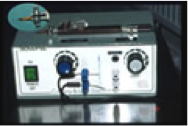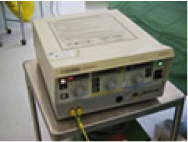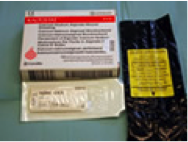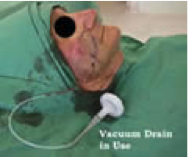Haemostasis
Haemostasis is more difficult in people with bleeding tendencies and in those taking aspirin or warfarin.
Elderly people with fragile skin, especially with sun and steroid damaged skin, are likely to bleed and bruise easily. Pre-operative assessment is vital.
Intra-operative haemostasis falls into six groups:
Adrenaline.
Use of adrenaline with local anaesthetic where possible.
Pressure.
Only light pressure is needed even for arterial bleeding. In areas such as the nose and forehead pressure on the skin around the wound will control arterial bleeding. Sterile cotton tip buds are very useful in providing local pressure in small wounds; apply directly over the bleeding vessel and roll to one side when ready to use diathermy. With heavy bleeding suction may be needed. If all else fails apply a hot wet pack to the wound and hold it in place under pressure for five minutes.
Clamping.
Small vessels may be picked up with a mosquito forceps and clamped. Often a half turn is sufficient to stop bleeding without ligation of the vessel. All vessels over 1mm diameter should be ligated with an absorbable suture such as 3/0 or 4/0Vicryl.
Under sewing. If the source of bleeding cannot be identified use a large needle e.g. 25mm and under sew the area with large bites of the needle. A z-stitch is helpful.

Hot wire cautery.A wire loop is heated by its resistance to an electric current. No current passes through the body. In use the tip should be dull red. If too hot it can be very destructive. Too low a temperature allows coagulated tissue to stick to the loop. Its main use is after curettage and shave biopsy. |

Diathermy.This is the application of high frequency current for the destruction of diseased tissue or for cutting tissue with diminished bleeding. Heat is generated by the resistance to the current, which passes through the tissue. Electro desiccation dehydrates superficial tissue; electro-coagulation produces greater damage and coagulates larger vessels. A plate electrode is needed. Bipolar forceps localise the damage. At the highest voltages electro cutting occurs. |

Topical Haemostatic Agents.Agents such as Oxycel and Gelfoam are slowly absorbed but may lead to increased risk of infection. Agents such as Monsel’s solution (ferric subsulphate) and aluminium chloride act as protein precipitating agents. They are most useful for wounds left to heal by secondary intention e.g. shave biopsy wounds. Silver nitrate sticks are useful in this context but may cause tattooing and a greater degree of necrosis). |
Post Operative Pressure.
This can be useful in preventing haematomas. It can be combined with elevation of the treated part. A pressure bandage is helpful for twenty four hours and in some sites such as ears is mandatory. The back of the ear should be padded to keep it in the anatomical position when bandaged.
• If bleeding occurs post operatively elevate the part and apply pressure for thirty minutes without interruption.
• If bleeding still persists the wound must be explored, the bleeding vessel ligated and any haematoma removed.
Vacuum Drain.
A small vacuum drain can be very useful to prevent tenting

